Antwerp is known as Belgium’s “capital of diamonds”. It is located just 15 kilometers south of the Dutch border, on the banks of the River Scheldt. Today, it continues to captivate visitors with its captivating blend of diamonds, fashion, art, and, of course, its amazing coffee shops.
As you wander through the streets of Antwerp, you’ll be greeted by a spectrum of architectural wonders that showcase the city’s diverse history. From the grandeur of Antwerp Central Station, a masterpiece of glass, steel, and marble, to the historic buildings in the Grote Markt, the city’s main square, each corner reveals a story waiting to be discovered.
Antwerp is a haven for art enthusiasts, boasting an impressive array of museums, art galleries and cultural centers. The FOMU Antwerp, for instance, is a must-visit for photography enthusiasts, with its ever-changing exhibitions and extensive collection of photographs and photographic tools. The Museum Vleeshuis offers a fascinating glimpse into the city’s musical heritage, showcasing a range of instruments and artifacts.
For those seeking a taste of Antwerp’s vibrant nightlife, the city does not disappoint. From trendy bars and clubs to cozy cafes and restaurants, there is something for everyone. And let’s not forget about the local beer scene, where you can indulge in a variety of delicious brews crafted with passion and tradition.
Antwerp is also a shopper’s paradise, with its diverse neighborhoods offering a range of boutique shops and designer stores. From the trendy streets of Meir and “Wilde Zee” to the bohemian vibes of Quartier Latin, there is no shortage of fashion-forward finds.
Whether you’re strolling through one of Antwerp’s many parks and open spaces, exploring its markets, or simply immersing yourself in the city’s vibrant atmosphere, Antwerp is a destination that will leave a lasting impression. Its rich history, cultural offerings, and undeniable charm make it a must-visit city for travelers seeking an unforgettable experience.
Contents
- 1. The Plantin Moretus Museum
- 2. FOMU Antwerp
- 3. The Red Star Line Museum
- 4. The Rubens House
- 5. M HKA, Museum of Contemporary Art Antwerp
- 6. Museum Mayer van den Bergh
- 7. MAS (Museum Aan de Stroom)
- 8. MoMu – Fashion Museum Antwerp
- 9. Royal Museum of Fine Arts Antwerp
- 10. Chocolate Nation Antwerp
- 11. DIVA Antwerp
- 12. Middelheim Open Air Sculpture Museum
- 13. Bunkermuseum Antwerpen
- 14. Museum Vleeshuis
Listed below are the best museums to visit in Antwerp.
- Plantin Moretus Museum. The Plantin Moretus Museum occupies the 16th century Officina Plantiniana printing office in Antwerp. It provides an immersive experience into the beginnings of printing and book production. The museum contains the world’s oldest printing presses and showcases the lives of the Plantin family of printers and their book printing art.
- FOMU Antwerp. FOMU Antwerp is the Photo Museum of Antwerp and one of Europe’s leading photography museums. It exhibits works by famous historical and contemporary photographers in diverse styles and techniques. FOMU champions emerging Belgian photographic talent and established names through ambitious world-class exhibitions.
- Red Star Line Museum. The Red Star Line Museum is housed in the original warehouses of the shipping company in Antwerp. It tells the story of millions of third class passengers who migrated from Europe to North America between 1873-1934. Exhibits convey the dreams and challenges faced through personal narratives, luggage, photos and artifacts.
- Rubens House (Rubenshuis). The Rubens House is the former home and studio of influential Flemish Baroque painter Peter Paul Rubens in Antwerp. The 17th century building houses many of Rubens’ renowned works. His large studio, courtyard, garden and personal art collection provide insight into the great painter’s lifestyle.
- M HKA, Museum of Contemporary Art Antwerp. The M HKA Museum of Contemporary Art Antwerp collects international and Belgian contemporary art from 1970 onward. It connects artistic and social issues through dialogues between exhibits and visitors. M HKA aims to be an accessible place for encountering contemporary art and relating it to historical context.
- Museum Mayer van den Bergh. Museum Mayer van den Bergh exhibits 19th century art collector Fritz Mayer van den Bergh’s impressive collection. After his sudden death, his mother built the museum next to their Antwerp home to memorialize her son and house his collection. Highlights include Pieter Bruegel the Elder’s “Mad Meg.”
1. The Plantin Moretus Museum
The Plantin Moretus Museum is located at Vrijdagmarkt 22 in Antwerp, Belgium. It is housed in the 16th century Officina Plantiniana printing office built by Christopher Plantin. The museum provides an immersive experience into the beginnings of printing and book production.
Plantin Moretus Museum is the only museum in the world that has been recognized as a Unesco World Heritage Site. That’s partly because of how well-maintained the building is, but also because of the museum’s rich collection. It owns the two oldest printing presses in the world, which are on display in the original printing workshop.
The Grand Library was also preserved. The Plantin family and their successors left behind a vast collection of documentation about their family lives and the art of book printing.
Those works, as well as other books printed before 1800 and manuscripts about book printing and graphic art, make up the museum’s book collection and can be consulted upon demand.
Visitors can access the museum via public transportation such as buses, trams and trains. The museum is open Tuesday through Sunday 10am to 5pm, and closed on Mondays and select holidays.
Ticket prices cost 8 euros for adults, 6 euros for seniors over 65 years old, 1 euro for youths 19-25 years old, and free entry for those under 19. Guided tours in different languages provide added insight into the exhibits.
Seeing the original printing presses used by Plantin and renowned works by Rubens are highlights. Walking through the preserved 16th century printing office offers a unique glimpse into early printing and bookmaking.
The museum’s workshops on bookbinding and typography can stimulate children’s interest, especially those who enjoy books, writing and art. The museum brings Antwerp’s print heritage to life in an educational and engaging way.
There’s even an Antwerp typeface that’s based on 16th century fonts found in the archives of the Museum Plantin-Moretus.
Today, the former Plantin Press it holds a collection of old books, maps and old printing tools. It also shows visitors what the rooms of the house used to look like, as the family Plantin also lived here.
2. FOMU Antwerp
FOMU Antwerp is the Photo Museum of Antwerp, one of the most prestigious and leading museums for photography in Europe. FOMU Antwerp collects and manages unique collections of photographic images, equipment, and photobooks. The museum creates ambitious exhibitions that provide context and make connections between works. FOMU Antwerp also champions emerging talent and established names from Belgium.
The address of FOMU Antwerp is Waalsekaai 47, 2000 Antwerp, Belgium. Visitors can get to FOMU Antwerp by public transportation or car. The museum is a 10 minute walk from Antwerp Central Station. Visitors can also take tram 7, 10, or 24 and get off at the Groenplaats stop, which is 5 minutes away. Limited paid parking is available near FOMU Antwerp.
FOMU Antwerp is open Tuesday to Sunday from 10am to 6pm. The museum is closed on Mondays and major Belgian holidays. Ticket prices are €12 for adults, €5 for visitors aged 19-26, and free for those under 18. Special rates are available with the Antwerp City Card, museumPASSmusées, and for groups.
FOMU Antwerp offers guided tours in Dutch and English for individuals and groups. Highlights include themed tours focused on current exhibitions, behind-the-scenes looks at the museum’s operations, and a photography workshop. Private group tours should be booked in advance.
Highlight of a visit to FOMU Antwerp include its world-class photography exhibitions. The museum presents works by famous historical and contemporary photographers, as well as emerging talent. Exhibitions cover diverse styles, techniques, and topics related to photography. FOMU Antwerp also has a museum shop, cafe, cinemas, reading room, and regularly hosts public programs.
FOMU Antwerp is child-friendly. Families can explore the exhibitions together through activity booklets tailored for children ages 4-12. The museum also offers the Pixel Pret interactive tour for preschool and primary school groups. School groups of all ages can book tailored tours and workshops focused on photography, visual literacy, and more.
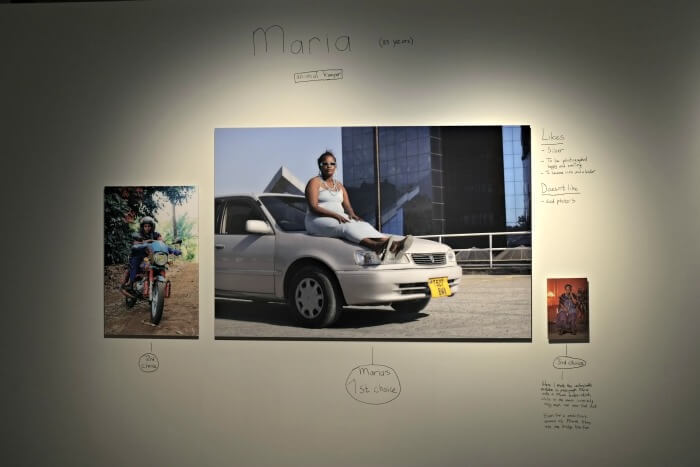
“Shooting Stars” – Jan Hoek
In 2015, the FOMU or Photo Museum of Antwerp celebrated its 50th birthday. Even though I spent a year living there during my studies and visited many Antwerp art museums, I didn’t discover this one during that time. Something that needed to be corrected as according to reviews it’s widely considered to be one of the best museums Antwerp has to offer. So when I spent a weekend in the city with a friend, I decided to go and have a look.
I had no idea what exhibitions were on and so I stepped inside without any expectations.
The first exhibition I saw was “Shooting Stars” by Jan Hoek. Hoek finds his models on the street, through friends or over the Internet and portrays them outside of their regular context. He asks his models how they want to be depicted and constantly asks himself how he can photograph them without exploiting them.
Something interesting about this exhibition was that for each piece there was a collection of three photos of the same model. Around the photos was written which photo the model had like the best, the second best and the least and why.
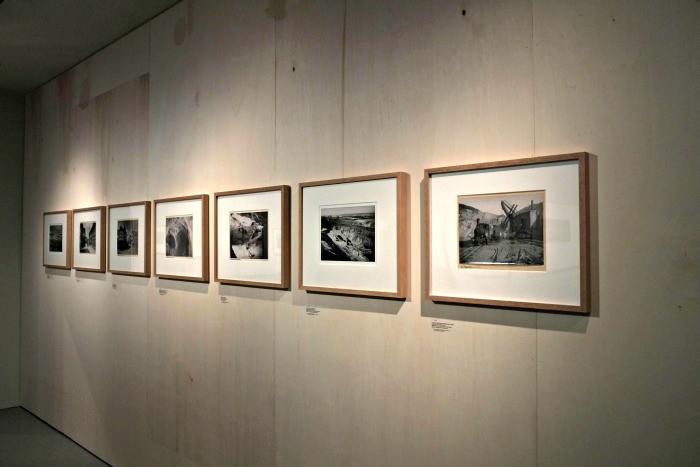
“Masterpieces and Discoveries” – August Sander
“Masterpieces and Discoveries” was an overview exposition of the work of photographer August Sander. It’s a combination of portraits, city views, botanical studies and more, all works made over the span of five decades.
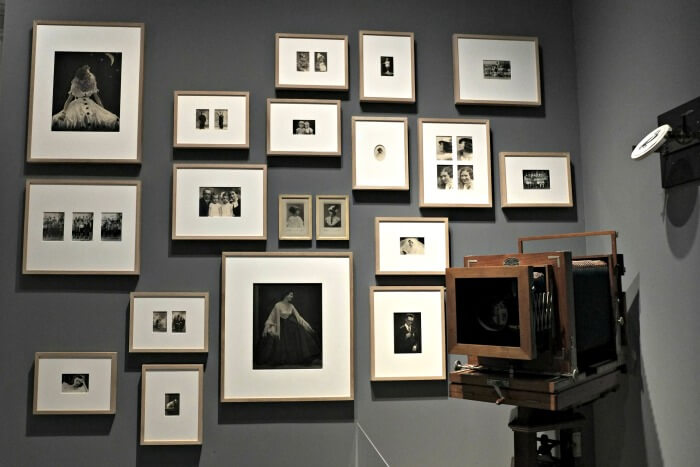
“Photography Inc”
Besides hosting temporary exhibitions, the Antwerp photography museum also has a collection of its own, consisting of photographs, photography equipment and books.
“Photography Inc” was an exposition entirely put together with pieces from the museum’s own collection. It tells the story of how photography evolved from being a luxury product to being a mass medium, from being an art form for the patient to a quick capturing of moments by the Instagram generation.
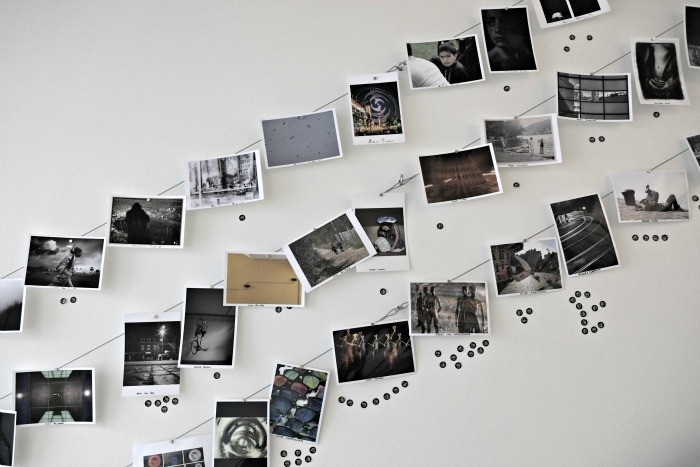
50 years FOMU
Lastly, I saw a special “exhibition” in the halls of the famous photo museum Antwerp. It celebrated its 50th birthday in 2015 and had asked people to send in their own best photos. These were then printed and hung on the wall for visitors to judge.
Visitors received “like” stickers that they had to put under the photo they liked the most. Like Facebook, but offline. A cool idea, I thought, and it was fun to see what kind of photos people had sent in.
3. The Red Star Line Museum
The Red Star Line Museum tells the story of the famous shipping company Red Star Line. Between 1873 and 1934, the Red Star Line transported over 2.5 million passengers from Antwerp to North America. Most of these passengers were immigrants looking for a better life and opportunities in America and Canada.
The museum is housed in the original warehouses of the Red Star Line shipping company on the Rijnkaai in Antwerp. This is where third class passengers went through immigration procedures like medical checks and disinfection before boarding the ships. The address of the Red Star Line Museum is Montevideostraat 3, 2000 Antwerp.
Visitors can get to the Red Star Line Museum by public transportation or car. The nearest train station is Antwerpen-Centraal. From there, take tram 7 to the Sint-Pietersvliet stop, which is about a 15 minute walk from the museum. Another option is to take bus 17 from Antwerpen-Centraal and get off at the Brouwersvliet stop, an 8 minute walk away. Limited paid parking is available near the museum.
The Red Star Line Museum is open Tuesday to Sunday from 10am to 5pm. It is closed on Mondays and major Belgian holidays. Ticket prices are 8 euros for adults, 6 euros for seniors and youth ages 12-26, and free for children under 12. Special discounted combination tickets are available with other Antwerp museums. Admission is free for residents of Antwerp, tour guides, and visitors on the last Wednesday of every month.
The museum offers several guided tour options, including museum tours, birthday parties, school programs, and city walks focusing on the history of the Red Star Line in Antwerp. Private group tours must be booked in advance through the museum’s website. Audio guides are available to rent for self-guided visits.
Highlights of the Red Star Line Museum include the observation tower, restored historic warehouses, replicas of ship cabins, and the unique personal stories of passengers. Visitors can see luggage, documents, photos, and objects carried by real Red Star Line passengers. The museum uses videos, artifacts, and interactive displays to tell the human side of migration.
The Red Star Line Museum is very child-friendly. There are areas for kids to play historical immigration games. School groups can book special educational programs. Families can also rent a suitcase with activities to explore the museum exhibits.
The observation tower is a top highlight, offering panoramic views over the River Scheldt. The museum is very accessible for wheelchairs and strollers. There is a museum cafe and shop onsite. Guided city walking tours are available to see other Red Star Line history around Antwerp after visiting the museum.
The Red Star Line Museum brings to life the universal dreams and challenges faced by immigrants seeking a better future. Through engaging exhibits and personal narratives, visitors gain perspective on migration past and present. It is a top cultural attraction and learning experience for visitors of all ages when visiting Antwerp and Belgium.
Find below our review for Red Star Line Museum.
Over 2.5 million. That’s how many Europeans boarded the Red Star Line ships in Antwerp, Belgium to migrate to North America in search of a better life between 1873 and 1934. The Red Star Line company has long ceased to exist, but its buildings are still there and today they house the Red Star Line Museum.
I find it hard to give you a quick overview of what I saw at the museum because there was simply so much – it’s easy to see why people rate it as one of the best museums in Antwerp and for me personally, it’s maybe even the best museum in Antwerp.
It tells the history of the Red Star Line and the migration from Europe via Antwerp to North America from different angles and perspectives. Through photographs, audio recordings, objects, information panels and video I learned about the types of boats that were used, the process immigrants had to go through to be allowed on board and into North America and their personal stories.
The stories focused on at the Red Star Line Museum are those of third-class passengers. Only people with a third-class ticket had to go through to an extensive medical check and disinfection process before they found out if they could board.
So even if you had a third-class ticket, you weren’t sure if you could travel to North America until you’d been completely checked and “approved”. These checks were very thorough because when they arrived in North America, the third class passengers needed to go through another check and if they weren’t approved there, the costs for sending them back were for the Red Star Line company to pay.
Passengers with a second or first-class ticket didn’t have to go through any checks and could simply arrive in Antwerp and board the ship. They obviously traveled in much more luxurious circumstances, although the conditions third-class passengers did improve somewhat over the years.
It was only after I’d already seen a part of the exhibition that I realized the route through the museum is the same route the migrants needed to follow to hand over their luggage, clothes and other personal possessions for disinfection, to shower and to get examined by a doctor before they knew whether they could depart or not.
It wasn’t only interesting to see the exhibition this way, it also made it easier to take in the wealth of information shown. I don’t like it when museums allows me to walk crisscross from one part of the exhibition to another without any guidance as to what I should see first, especially when there’s a somewhat chronological order to follow.
Besides following the route the migrants took through the buildings of the Red Star Line company, the museum also takes its visitors from the lead-up to the migration flow and Antwerp’s role in it to the transformation of the “migration ships” into cruise ships after the migration boom was over. It even touches on the topic of migration in today’s world.
At the end of the tour, you can go through Red Star Line passenger lists on a computer to see if you have a relative who’s ever migrated through here.
Afterward, you can climb the museum’s tower for a view over Antwerp. And maybe a pensive moment about what’s happening in the world right now.
4. The Rubens House
The Rubens House (Rubenshuis) is the former home and studio of Peter Paul Rubens, one of the most influential Flemish Baroque painters. It is located at Wapper 9-11 in Antwerp, Belgium.
In 1610, two years after returning from Italy, Rubens purchased a house in Antwerp and rebuilt it in an Italian Renaissance style, adding a studio, courtyard, and garden pavilion. Rubens lived and worked there until his death in 1640. His family continued living in the home until selling it in 1660. The city of Antwerp purchased the property in 1937 and restored it, opening it as a museum in 1946.
Visitors can reach the Rubens House by taking tram lines 3, 5, 9 or 15 to the Meir stop. The museum is about a 12-minute walk from Antwerp Central Station. Limited paid parking is available nearby, but most visitors arrive by public transportation.
Rubens house is temporarily closed for renovation as of September 2023.
The Rubens House is open Tuesday through Sunday from 10am to 5pm. It is closed on Mondays and some public holidays. Ticket prices are 8 EUR for adults, 6 EUR for seniors and visitors ages 12-25, and free for children under 12. The last Wednesday of every month admission is free. Tickets can be purchased at the museum.
The highlights of visiting the Rubens House include seeing the studio where Rubens worked, the courtyard, and several notable paintings. The studio contains his large-scale works “The Annunciation” and “Adam and Eve.” Other highlights are the Art Room which exhibits his personal art collection, the bedroom where you can see portraits of his family, and the garden. There are audio guides available in several languages.
The Rubens House is suitable for families and children, with activity books available. Strollers are not permitted inside but can be left near the entrance. The ground floor rooms and garden are wheelchair accessible, but the upper floors can only be reached by stairs. Service dogs are welcome. There is a museum cafe but no restaurant onsite.
The Rubens House provides visitors with an intimate look at the home and workplace of one of history’s greatest painters. Located in central Antwerp, it can be reached easily by public transportation and makes for an engaging cultural experience for tourists of all ages. The 17th century architecture and studio, renowned art collection, and historic furnishings offer a unique glimpse into Rubens’ life.
5. M HKA, Museum of Contemporary Art Antwerp
The M HKA (Museum of Contemporary Art Antwerp) is an international museum located in Antwerp, Belgium. It is housed in a renovated and expanded grain silo from 1926. The museum’s collection consists of Belgian and international contemporary art from 1970 onwards. It holds several temporary exhibitions each year. The museum has a library, archive, museum shop and M HKAFE cafe on the top floor.
The M HKA was officially established in 1985 and opened to the public in 1987, initially showing works donated by the Foundation Gordon Matta-Clark. Over the years, the museum has expanded its collection to over 4,750 works by nearly 700 artists. The collection focuses on avant-garde traditions in Antwerp since the 1960s as well as socially engaged contemporary art.
The museum aims to play a leading role in Flanders and build an international profile based on Antwerp’s avant-garde tradition. It connects artistic and societal issues, international and regional perspectives, artists and the public, tradition and innovation. The collection, its ongoing acquisitions, management and research are central to this mission.
The M HKA is located at Leuvenstraat 32, 2000 Antwerpen, Belgium. Visitors can take public transportation to the Antwerpen-Centraal train station and then walk about 2 km to the museum. The museum is open Tuesday to Sunday from 11am to 6pm, with extended hours on Thursdays until 9pm. It is closed on Mondays. Ticket prices are €10 for adults, €5 for visitors 26 and under, and free for children under 19.
Guided tours are available on request in Dutch and English. Family tours catering to children are offered on Sundays. The M HKAFE cafe on the top floor is a highlight, offering views over the city and the Scheldt river.
The M HKA aims to be an accessible and welcoming place for encountering contemporary art. While the collection and exhibitions focus on recent decades, the museum situates the work in historical context and aims to generate dialogue between art and visitors. Tourists interested in modern art, Antwerp culture and architecture are likely to appreciate a visit.
The museum makes an effort to be family-friendly by offering special tours and workshops for children during school holidays. Strollers are available on request. While some installations may be challenging for young children, families can discuss and interact with contemporary art together.
Find below our review for M HKA.
I can’t really say that contemporary art is my thing. Of course, “contemporary art” is a very large and flexible concept, but what I mean by contemporary art is the kind of art that represents something or “means” something more than it shows on the surface.
Does that make sense? A painting of flowers is a painting of flowers, but a toilet in the middle of a room that automatically flushes probably has a deeper meaning. Or so we are lead to believe.
That doesn’t mean I can never appreciate “contemporary art”. Sometimes I see something that I like, but then I quickly realize I like it because it’s “pretty” or cool-looking and probably not for the reasons the artist intended it to be liked. Or disliked. Who knows.
So it was with curiosity and a sense of reservation that I entered the M HKA, Belgium’s Museum of Contemporary Art, Antwerp.
The MuHKA or “M HKA” is above everything a museum of art in Antwerp, but it’s also much more than that. Aside from contemporary (visual) art exhibitions, M KHA also hosts lectures, has an in-house cinema and organizes workshops. It supports and participates in art research and has a library that’s open to the public with over 32,000 books, catalogs, and magazines.
Have a look around:
6. Museum Mayer van den Bergh
Museum Mayer van den Bergh is an art museum located in Antwerp, Belgium. The museum exhibits the art collection of Fritz Mayer van den Bergh (1858-1901), who was an enthusiastic 19th century art collector. After Fritz’s sudden death at age 43, his mother Henriëtte Mayer van den Bergh constructed the museum next to their family home in 1904 to house her son’s impressive collection and keep his memory alive.
The address of Museum Mayer van den Bergh is Lange Gasthuisstraat 19, 2000 Antwerpen, Belgium. The museum is situated in central Antwerp, about a 15 minute walk from Antwerp Central train station. Visitors can also take tram lines 15, 17, 10 or 24 to the Groenplaats stop, which is a 5 minute walk from the museum.
Museum Mayer van den Bergh’s opening hours are Tuesday to Sunday from 10am to 5pm. The museum is closed on Mondays, except on public holidays. Last admission is at 4pm.
Ticket prices at the museum are €8 for adults, €6 for visitors aged 18-25, and free for those under 18. Discounted tickets are available for groups, visitors with disabilities, teachers, and holders of certain museum cards.
The museum offers guided tours for groups and highlights tours on Sundays at 1pm focusing on masterpieces in the collection. Visitors can also take advantage of an audio guide available in multiple languages.
A highlight for visitors to Museum Mayer van den Bergh is seeing Pieter Bruegel the Elder’s famous 1561 painting “Dulle Griet” (“Mad Meg”), which Fritz discovered and acquired for the collection. This mysterious and grotesque painting of a woman looting hell is considered a masterpiece of Western art.
Museum Mayer van den Bergh offers an intimate experience suited for adults and older children interested in art. The museum’s collections span paintings, sculpture, stained glass, textiles, coins, and more from the Middle Ages through the 19th century. A visit allows you to discover not only remarkable artworks, but the story of an early 20th century museum founded out of a mother’s devotion.
7. MAS (Museum Aan de Stroom)
The MAS (Museum Aan de Stroom) is a modern and striking museum located in Antwerp, Belgium that opened its doors to the public in May 2011. With its impressive architecture and expansive collection, MAS offers visitors a captivating exploration of Antwerp’s history, art, culture, and maritime heritage.
The 60-meter high MAS building was designed by the renowned Dutch architectural firm Neutelings Riedijk. The façade showcases beautiful red sandstone and massive panes of undulating glass, paying homage to Antwerp’s connection with the river Scheldt. MAS houses over 470,000 objects in its collection, making it the largest museum in Antwerp. Only a small portion of the collection is on display at any time.
The address of the MAS (Museum Aan de Stroom) is Hanzestedenplaats 1, 2000 Antwerpen, Belgium. The museum is conveniently located in Antwerp’s old harbour area called Het Eilandje, just a 10 minute walk north of the city center.
Visitors can easily get to MAS using Antwerp’s public transportation system. From Antwerp Central Station, take tram line 7 from the Meirbrug stop to MAS, which is the last stop. The trip takes about 15 minutes. There is also a Velo bike sharing station right at the museum entrance. Limited street parking is available nearby.
The opening hours for MAS are Tuesday to Sunday from 10:00 a.m. to 5:00 p.m. The museum is closed on Mondays and major Belgian holidays. However, the exterior Boulevard and Rooftop Panorama are open daily from 9:30 a.m. to 10:00 p.m.
Ticket prices to access the interior museum range from €10 for adults to €6 for young adults (ages 18-25). Visitors under 18 enter for free. Special discounted rates are offered for seniors, disabled visitors, teachers, and tour groups.
MAS offers a variety of guided tours that provide a deeper understanding of the expansive collection and architecture. Tour themes cover topics like Antwerp’s history, the port, architecture, and exhibitions. Tours can be booked privately or as part of a group. Self-guided audio tours are also available through an app.
A highlight for many tourists visiting MAS is enjoying the spectacular 360 degree view of Antwerp from the rooftop panorama deck. The panorama is free to access and offers stunning views of the harbour, Scheldt river, and the city skyline. The architectural wonder of the building itself as you ascend through the levels is also a key highlight.
MAS is very child-friendly and caters well to families. The museum offers special tours, workshops, and events for kids of all ages. Family tickets are available at a discounted price. Strollers can be used throughout the building and baby changing facilities are provided. The museum also has an on-site café and ample seating to take breaks.
8. MoMu – Fashion Museum Antwerp
MoMu – Fashion Museum Antwerp is a fashion museum located in Antwerp, Belgium. It was founded in 2002 and is housed in a beautifully restored 19th century building in the heart of the city’s fashion district. The museum has the largest collection of contemporary Belgian fashion in the world, with over 25,000 objects including clothing, accessories, textiles, lace, embroidery, shoes, hats, and more.
The museum is located at Nationalestraat 28, 2000 Antwerp, Belgium. The full address is MoMu – Fashion Museum Antwerp, Nationalestraat 28, 2000 Antwerp, Belgium. Visitors can get to MoMu – Fashion Museum Antwerp by public transportation or car. By public transport, take tram 4, metro lines 3, 5, 9 or 15 to Groenplaats. Or take bus 22, 180, 181, 182 or 183 to Groenplaats. The museum is within walking distance from Central Station Antwerp. By car, parking is available at the Cammerpoorte, Brabo or Indigo car parks.
MoMu – Fashion Museum Antwerp is open Tuesday to Sunday from 10am to 6pm. It is closed on Mondays, except on public holidays. Ticket prices at MoMu are €12 for adults, €8 for young adults aged 18-25, and free for those under 18. Special rates apply for groups, students, seniors, families, and city card holders. Tickets can be purchased at the museum entrance or online in advance.
Guided tours are available at MoMu for both individual visitors and groups. Individuals can join a guided tour on Saturdays at 11am with advanced booking. For student groups, school groups or adult groups, custom tours can be booked with museum guides by request.
A highlight for visitors is the museum’s immersive and theatrical exhibitions that fully transform the gallery spaces. Exhibitions dive into the universe of featured designers or themes, with multimedia, artifacts, recreations and engaging scenography. The museum also has a permanent collection display of avant-garde Belgian fashion history.
MoMu – Fashion Museum Antwerp is child-friendly. While some exhibitions may interest older children, the museum offers family workshops on select weekends and holidays that provide hands-on creative activities for kids. School groups are also welcome for educational tours. Strollers can be used throughout the museum.
9. Royal Museum of Fine Arts Antwerp
The Royal Museum of Fine Arts Antwerp (KMSKA) is a museum located in Antwerp, Belgium that houses an extensive collection of paintings, sculptures, drawings, and prints spanning seven centuries of European art. Founded in 1810, the KMSKA contains over 8,400 works, with a particular focus on Flemish art from the 15th to 20th centuries.
The KMSKA is located at Leopold de Waelplaats 2, 2000 Antwerpen, Belgium. The museum is situated in Antwerp’s Zuid district, close to the city’s main train station Antwerpen-Centraal. Visitors can take tram line 9 or 15 from the train station to the KMSKA tram stop, which is right in front of the museum. Driving to the KMSKA is also possible, with parking available at the nearby Q-Park Kooldok parking garage.
The KMSKA is open Tuesday to Friday from 10am to 5pm, Thursday from 10am to 10pm, and Saturday and Sunday from 10am to 6pm. The museum is closed on Mondays. Ticket prices are €10 for adults, €5 for visitors aged 19-25, and free for those under 19 years old. Discounted tickets are available for seniors, groups, and holders of certain passes like the Museumpass. Guided tours of the museum are offered in several languages for an additional fee.
A highlight for visitors is the KMSKA’s extensive collection of works by Peter Paul Rubens, who was based in Antwerp. The Rubens Gallery contains many of his monumental altarpieces, including The Adoration of the Magi and The Ascension of the Virgin. The museum also has the world’s largest collection of works by Belgian artist James Ensor, spanning his career from realism to expressionism. Visitors shouldn’t miss his unsettling, surreal masterpiece The Intrigue.
Other highlights include exceptional 15th and 16th century paintings by Rogier van der Weyden, Hans Memling, Jan van Eyck, and other Flemish Primitives. The collection has a remarkable range of European art, from the Renaissance to Impressionism and other modern movements. Temporary exhibitions are also regularly organized.
The KMSKA is very visitor and child-friendly. Interactive exhibits, multimedia guides, and activities cater to children and families. A free treasure hunt booklet for kids guides them through fun discoveries in the galleries. Workshops allow visitors of all ages to get creative with art-making. The museum’s cafe provides a nice resting spot for families. Strollers and wheelchairs can access all galleries.
10. Chocolate Nation Antwerp
Chocolate Nation Antwerp is the world’s largest Belgian chocolate museum located in the heart of Antwerp, Belgium. It is an innovative and interactive museum that takes visitors on a journey through the history of Belgian chocolate.
The museum is situated at Koningin Astridplein 7, 2018 Antwerpen, Belgium. It is located right across from Antwerp Central Station, making it easily accessible by public transportation. Visitors can take the train, tram, or bus to Antwerp Central Station and the museum is just a short walk across the square. If driving, there are parking garages nearby the museum as well.
Chocolate Nation is open 7 days a week. The opening hours are from 10:15AM to 6:30PM every day. Last entry is at 5:30PM. The museum is open year-round except for a few holidays such as Christmas Day and New Year’s Day.
Listed below are the ticket prices based on the age of the visitor:
- Adults: €19.90
- Students: €18.50
- Teens (ages 12-17): €18.50
- Kids (ages 4-11): €14.50
- Children 0-3: Free
- Seniors: €18.90
- Groups of 15+ people: €18.50
Tickets can be purchased at the ticket desk upon arrival or online in advance on the Chocolate Nation website. Buying tickets online is recommended to guarantee entry during peak times.
Chocolate Nation offers a variety of tours and experiences. The standard museum tour lasts 60-90 minutes and takes visitors through 14 themed rooms telling the story of Belgian chocolate. An audio guide is included with admission and guides visitors through the tour. There are also chocolate-making workshops where visitors can learn how to make pralines and other chocolate creations from the onsite chocolatiers. Private and group tours can be booked as well as themed events and team building activities. The museum also has private rooms available for meetings, seminars, and receptions.
One of the highlights for visitors is the tasting experience towards the end of the tour. Guests receive a tasting spoon which they can use to sample liquid chocolate from 10 different machines representing various flavors and chocolate types. It’s an indulgent experience visitors rave about.
The museum is very child-friendly. Kids are given activity books and have to find hidden chocolate characters throughout the exhibits. Chocolate Nation also caters well to school field trips with educational content tailored for different age groups. There are many interactive elements to keep children engaged from start to finish.
11. DIVA Antwerp
DIVA Antwerp is a museum dedicated to diamonds, jewelry and silverwork located in the heart of Antwerp, Belgium. The museum opened in May 2018 and combines the collections of the former Diamond Museum and Silver Museum.
The address of DIVA Antwerp is Suikerrui 17-19, 2000 Antwerpen, Belgium. It is located in the historic center of Antwerp, just steps away from the Grote Markt (main square).
Visitors can easily reach DIVA Antwerp by public transportation or walking. The nearest tram and bus stops are located at Groenplaats, just a 5 minute walk from the museum. There is paid street parking nearby and parking garages at Grote Markt and Groenplaats. DIVA Antwerp is also walking distance from Antwerpen-Centraal train station.
DIVA Antwerp is open Tuesday to Sunday from 10am to 6pm, with last entry at 5pm. The museum is closed on Mondays.
Ticket prices are €12 for adults, €8 for visitors aged 12-26 years old, and free for children under 12 years old. Discounted tickets are available with the Antwerp City Card, Teachers Card, and Museum Pass.
DIVA offers both guided and self-guided tours. Guided tours are available for groups with advanced booking. For independent visitors, there are two audio tour options – one focusing on factual information and the other on fictional stories. The audio guides are available in Dutch, English and French.
A highlight for visitors is the interactive exhibits and multimedia displays throughout the museum. There are short films, touch screens, interactive tables, and immersive room settings that engage visitors in the world of diamonds, jewelry, and silverwork. The collection of over 600 objects spanning centuries is another highlight.
DIVA Antwerp is very child-friendly. Children under 12 years get free admission and there is an audio tour specially designed for kids ages 7 and up. The interactive exhibits also appeal to young visitors through games and activities. Families appreciate the convenience of stroller parking and baby changing facilities at the museum.
12. Middelheim Open Air Sculpture Museum
The Middelheim Open Air Sculpture Museum is an open-air museum located in the Middelheim Park in the Antwerp municipality of Wilrijk, Belgium. It houses a collection of over 400 works of modern and contemporary art dating from the early 20th century to the present day.
The museum originated in 1950 when the city of Antwerp organized an international sculpture exhibition in Middelheim Park showcasing 167 sculptures by 104 artists. Following the success of this exhibition, it was decided to establish a permanent open-air sculpture museum on the grounds. The Middelheim Open Air Sculpture Museum officially opened to the public in 1951 and has since become one of the foremost sculpture museums in Europe.
The address of the Middelheim Open Air Sculpture Museum is Middelheimlaan 61, 2020 Antwerp, Belgium. It is located in the southern part of Antwerp, about 4 miles from the city center. Visitors can reach the museum by public transportation or car. It is easily accessible by bus, tram or train. If driving, there is free parking available onsite. Bicycles can also be parked at one of the three main entrances.
The Middelheim Open Air Sculpture Museum is open Tuesday to Sunday from 10am to 5pm in winter (October to March) and 10am to 9pm in summer (April to September). It is closed on Mondays as well as January 1, May 1, Ascension Day, November 1 and December 25.
Entry to the museum grounds is free. There is no admission fee to walk around and view the outdoor sculptures. Access to the indoor exhibition spaces such as the Braem Pavilion requires purchasing an e-ticket online prior to visiting. These indoor tickets are also free.
The museum offers a variety of guided tours that provide background about the artworks and artists. There are tours available for groups, schools, families, adults and children. Tours need to be booked in advance and cost between €100-150 per group. Audio guides can also be rented onsite for €5.
Highlights for visitors include walking or biking along the miles of scenic paths to discover monumental sculptures integrated into the natural surroundings. Notable works to see are The Dragon by Spanish artist Pablo Gargallo, The Prophet by Auguste Rodin, and King and Queen by Henry Moore. There is also a charming cafe located in the historic castle at the center of the park.
The Middelheim Open Air Sculpture Museum is very child-friendly. Kids will enjoy exploring the park and spotting unique art pieces. The combination of art and nature provides a fun and interactive way for children to experience sculpture. Families can pick up a free kids map and guide at the entrance.
13. Bunkermuseum Antwerpen
Bunkermuseum Antwerpen is a museum located in Park Den Brandt in the Wilrijk district of Antwerp, Belgium. The museum is housed in a complex of bunkers that were built in 1943 as the command headquarters for the German 89th Army Corps during World War II. The 89th Army Corps was responsible for defending the Atlantic Wall fortifications in Belgium and the Netherlands.
The museum is located at Acacialaan 15, 2020 Antwerpen, Belgium. The nearest major road is R11 which runs north-south just west of the park. The museum can be reached by car or public transportation. There is free parking available at the museum entrance off Acacialaan. The museum is also accessible by tram lines 6 and 2 which stop about 1km away at the Olympiade stop. From there it’s about a 10 minute walk to the museum entrance.
Bunkermuseum Antwerpen is open to the public on the first weekend of every month, except January. On Saturdays it is open from 1pm to 5pm and on Sundays from 10am to 5pm. Guided tours are also available by appointment throughout the week for groups. Tickets cost 5 euros for adults. Children under 12 years old enter for free. Guided tours for groups of 8 or less people cost a minimum of 50 euros. Larger groups are split into multiple tours.
Currently three of the bunkers are open to the public. The main attractions are the SK1 command bunker which houses the museum exhibits and two smaller bunkers – a hospital bunker and personnel bunker. The SK1 bunker contains artifacts, photos, documents, and displays related to the Atlantic Wall, the air war over Antwerp, and the V-1 and V-2 rocket attacks on the city. There are also many original components of the bunker infrastructure still in place, including the machine room, air filtration system, and emergency power supply.
Highlights for visitors include being able to walk through the long underground corridors and small rooms of the bunkers to vividly imagine what life was like for the German soldiers stationed there. The exhibits in the SK1 bunker provide a comprehensive look at Antwerp’s important strategic role during World War II and the devastation inflicted on the city by Allied bombing and German V-weapons. Visitors can also view the restored interior of the personnel and hospital bunkers to understand how the soldiers lived and were cared for.
The bunkers are accessible for visitors with disabilities. Due to the historic nature of the site, some passages may be narrow or have high steps. The museum exhibits would be interesting for older children, but probably not very engaging for young kids. The volunteers who manage the museum are very passionate about the history and provide excellent guided tours full of fascinating details.
14. Museum Vleeshuis
The Museum Vleeshuis, also known as the Butcher’s Hall or Meat House, is a museum located in Antwerp, Belgium. It is housed in a former guildhall built between 1501-1504 in the late Gothic architectural style. The museum is situated between three streets – the Drie Hespenstraat, the Repenstraat and the Vleeshouwersstraat.
The Museum Vleeshuis tells the story of 600 years of sound, music and dance in Antwerp. It is more than just a museum of musical instruments, taking visitors on an immersive journey through the musical past. The museum showcases not only instruments but brings the music itself to life through multimedia displays. Music from the streets, church towers, dance halls, churches, outdoor bandstands and concert halls is all given a platform.
The address of the Museum Vleeshuis is Vleeshouwersstraat 38-40, 2000 Antwerpen, Belgium. The museum can be easily reached by public transportation, stopping at the Groenplaats tram and bus stop, just a 5 minute walk away. Parking is available at the underground parking garage Grote Markt, just 2 minutes from the museum.
The Museum Vleeshuis is open Thursday through Sunday from 10am to 5pm. It is closed on Mondays, Tuesdays, and Wednesdays, as well as on January 1, May 1, November 1 and December 25.
Ticket prices are €8 for adults, €5 for visitors 18-25 years old, and free for those under 18. Special discounted rates are available for groups of 12 or more, visitors with disabilities, teachers, and various museum passes.
The Museum Vleeshuis offers guided group tours in English, Dutch or French, bookable via their website or by phone. Popular highlights include the tower climb up the Cathedral of Our Lady and behind-the-scenes tours of the museum itself. Audio guides are also available to rent.
For tourists, highlights include the museum’s impressive collection of musical instruments, such as harpsichords made by the Ruckers family, the only known historical double bass recorder from 1535, and a Conrad Graf fortepiano from 1826. Interactive multimedia displays allow visitors to listen to the sounds of instruments and music from throughout Antwerp’s history. Reconstructed workshops demonstrate instrument-making and bell casting techniques.
The Museum Vleeshuis is child-friendly, with special workshops, tours and activities for schools and families. The “Wolfje” treasure hunt takes kids on an explorative tour through the museum. The interactive app “Boem! Paukenslag” teaches the history of percussion instruments. In the summer months, children can even learn to play the carillon bells in the cathedral tower.
What are the top art museums and galleries in Antwerp?
Listed below are the top art museums and galleries in Antwerp.
- Royal Museum of Fine Arts (KMSKA). This world-class museum houses famous works by old masters like Rubens, Van Dyck, Titian, and Modigliani. It has the largest collection of works by Flemish artist James Ensor.
- Rubens House. The former home and studio of Peter Paul Rubens with many of his paintings on display. It also houses works by other Flemish masters like Van Dyck and Jordaens.
- Museum Mayer van den Bergh. Features a diverse collection including works by Bruegel, Bosch, Rubens, Van Dyck, and other notable artists. Its masterpiece is Bruegel’s “Mad Meg.”
- Museum Plantin-Moretus. In addition to historic printing presses and manuscripts, it has paintings by Rubens, Van Dyck, and Otto van Veen.
- Snijders & Rockoxhuis. Snijders & Rockoxhuis shows paintings by Rubens, Jordaens, Van Dyck, and other 17th century Flemish artists.
- Middelheim Open Air Sculpture Museum. Over 400 modern and contemporary sculptures displayed in a park setting. Works by Rodin, Henry Moore, Panamarenko, and others.
- FOMU Photography Museum. Major photography museum with excellent temporary exhibitions.
What are the top historical museums in Antwerp?
Listed below are the top historical museums in Antwerp.
- Museum Plantin-Moretus. Museum Plantin-Moretus showcases the workshops and remarkable history of one of the most important printing presses in Europe.
- Rubens House. Provides insight into Rubens’ life and Antwerp in the 17th century.
- Museum Mayer van den Bergh. Exhibits artworks and artifacts from 19th century collector Fritz Mayer van den Bergh.
- Maagdenhuis Museum. Housed in a former 16th century orphanage with exhibits on its history.
- Red Star Line Museum. Dedicated to the history of European migration to America via Antwerp.
- Museum Vleeshuis. Traces 600 years of musical history in Antwerp. Located in a former 15th century guild hall.
What are the best things to do in Antwerp?
Listed below are some of the best things to do in Antwerp.
- Gawp at Antwerp Central Station: Marvel at the grandeur of Antwerp Central Station, a magnificent structure made of glass, steel, and marble.
- Visit Museum Vleeshuis: Explore the Museum Vleeshuis, a music museum located in the Butchers’ Hall building. Discover the rich musical history of Antwerp and admire the exhibits showcasing instruments and artifacts.
- See Diamond-cutters at Work: Head to the Diamond District and witness the skilled diamond-cutters in action. Be amazed by the precision and craftsmanship involved in creating these precious gems.
- Taste Local Beer: Don’t miss the chance to sample the local beer in Antwerp. With a rich brewing tradition, the city offers a variety of delicious and unique brews to try.
- Go Bargain-hunting at Markets: Immerse yourself in the vibrant markets of Antwerp and hunt for bargains. From vintage finds to fresh produce, the markets offer a lively atmosphere and an opportunity to discover local treasures.
These are just a few of the many wonderful things to do in Antwerp.
Is Antwerp safe to visit?
Yes, Antwerp is considered a safe city to visit. It has low crime rates compared to other major European cities. Violent crime and gun violence are rare. Petty crimes like pickpocketing and bicycle theft do occur, especially around tourist areas. Visitors should be cautious of scams and theft in crowded areas. Antwerp city center and tourist districts have high police presence and active security cameras to deter crime. Nighttime around the central train station and red light district has higher risks. But the areas frequented by tourists are patrolled. As with any big city, travelers should take precautions like avoiding poorly lit areas at night, not displaying valuables, and keeping belongings secure. Belgian police are helpful and resources are available in English for tourists if issues arise. Belgium has been on alert since the Brussels attacks in 2016 but major security efforts have been put in place. Overall, Antwerp is as safe as most major European cities. Basic precautions will allow visitors to experience Antwerp comfortably without much elevated risk compared to other urban travel destinations.
Is Antwerp expensive to visit?
No, Antwerp is not more expensive than other popular cities in Western Europe and it’s actually less pricey than, for example, London. While you may find some higher-priced options in terms of dining and shopping, overall, Antwerp offers a range of options to suit different budgets. So, you can definitely plan a visit to Antwerp without breaking the bank.
What are the best hotels to stay in Antwerp?
Listed below are the best hotels to stay in Antwerp.
- Sapphire House Antwerp, Autograph Collection: Sapphire House Antwerp is part of the Autograph Collection and offers a luxurious and unique experience in the city’s heart. The hotel’s design is inspired by the city’s rich diamond heritage, with elegant interiors reflecting modern sophistication and timeless elegance. Guests can enjoy top-notch amenities, including a gourmet restaurant, a spa, and well-appointed rooms, making it an ideal choice for leisure and business travelers seeking comfort and style. Sapphire House Antwerp, Autograph Collection is considered one of the best hotels to stay in Antwerp.
- Botanic Sanctuary Antwerp – The Leading Hotels of the World: As a member of The Leading Hotels of the World, this hotel offers an oasis of tranquility and luxury. With its exquisite design blending classic architecture and contemporary touches, it provides a serene atmosphere for guests. The lush botanical gardens and commitment to sustainability and wellness make it a top choice for a refined stay.
- U Eat & Sleep Antwerp: This luxury design hotel is situated near the famous MAS museum. The rooms offer a luxurious experience with amenities such as rain showers, Bluetooth music stations, and designer sinks. Guests can enjoy the quality linen, stylish bathrooms, and free WiFi during their stay.
What are the best coffee shops and bars in Antwerp?
Listed below are the best coffee shops and bars in Antwerp:
- Dogma: Dogma is a cocktail bar quickly becoming a favourite among locals and visitors for its innovative and expertly crafted cocktails. Located in a cosy and atmospheric space, the bar’s interior exudes a vintage charm, with dim lighting and classic décor. The bartenders at Dogma are true artisans, creating bespoke cocktails that cater to individual tastes, making it a perfect spot for those seeking a sophisticated and personalised drinking experience.
- Jones & Co: Jones & Co is a modern and stylish bar that offers a wide selection of spirits, cocktails and wines. Known for its friendly and knowledgeable staff, the bar provides a relaxed and welcoming atmosphere where guests can explore new flavours and classic favourites. With regular events, tastings and a commitment to quality, Jones & Co has established itself as a go-to destination for those looking to enjoy a lively evening with friends in a chic and contemporary setting.
- Beerlovers Bar: As the name suggests, Beerlovers Bar is a haven for beer enthusiasts, offering an extensive selection of local and international craft beers. With over 30 beers on tap and hundreds more in bottles, the bar allows one to explore craft beer’s rich and diverse world. The laid-back ambience, communal seating and passionate staff make Beerlovers Bar a must-visit for anyone looking to discover new brews, enjoy classic ales and engage in friendly conversation with fellow beer lovers.
PIN FOR LATER

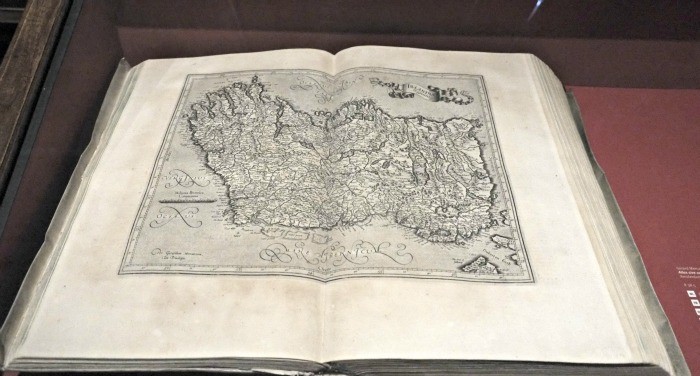
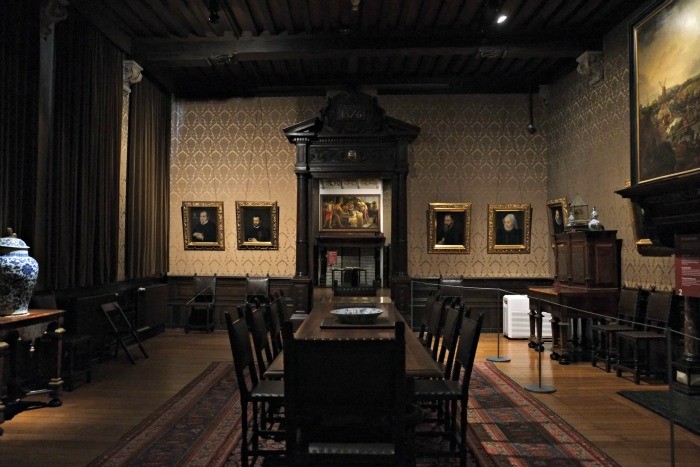
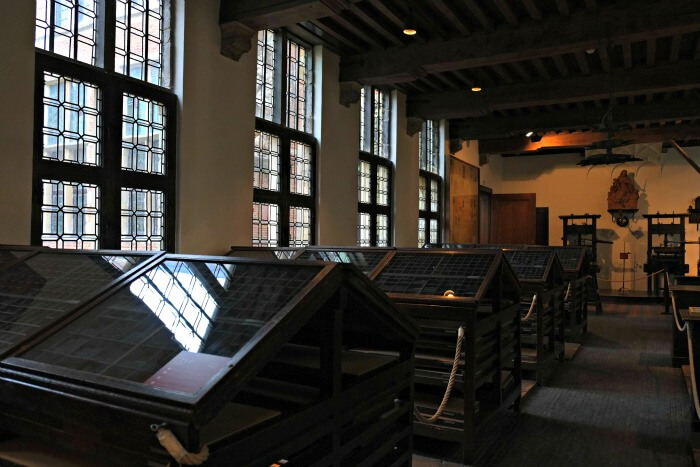
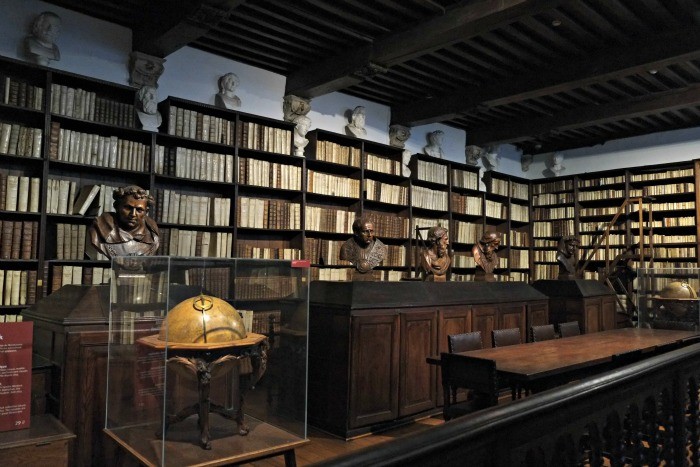
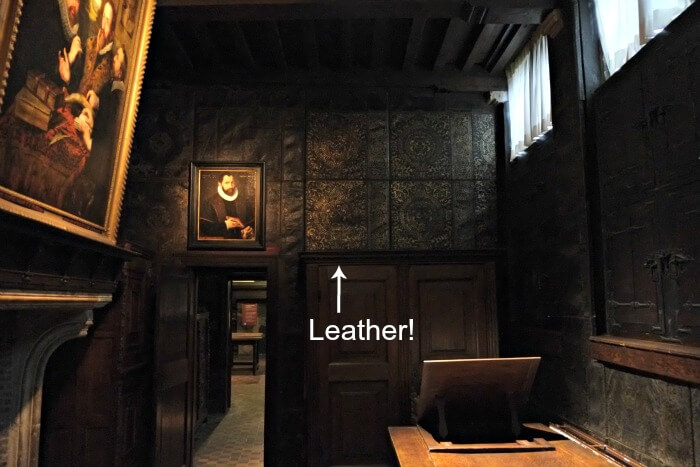
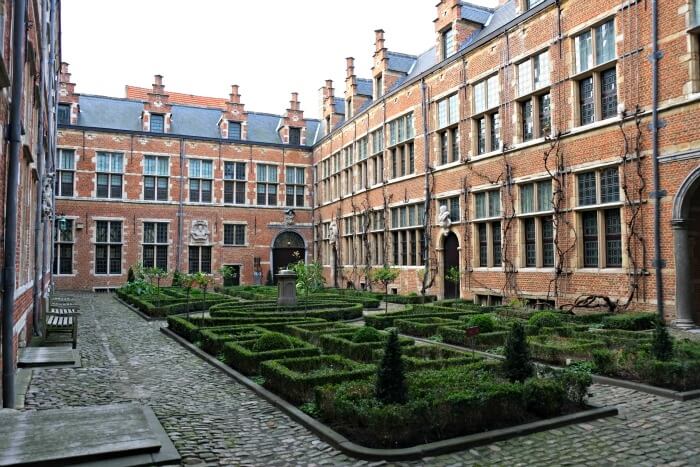
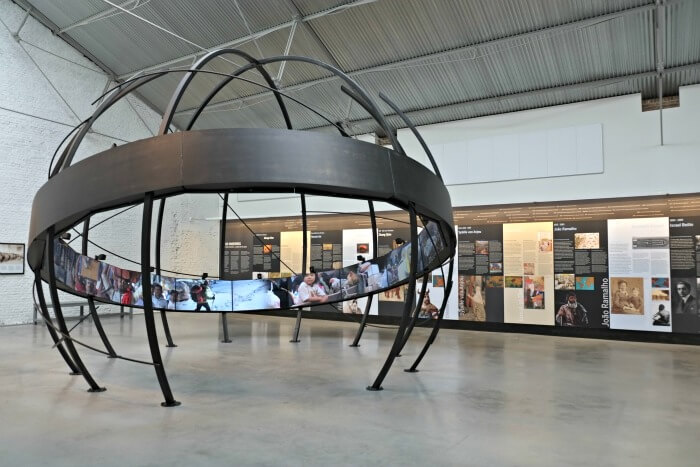
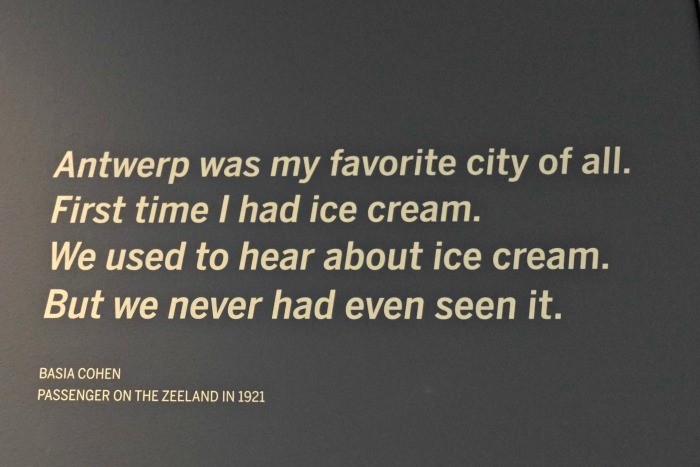
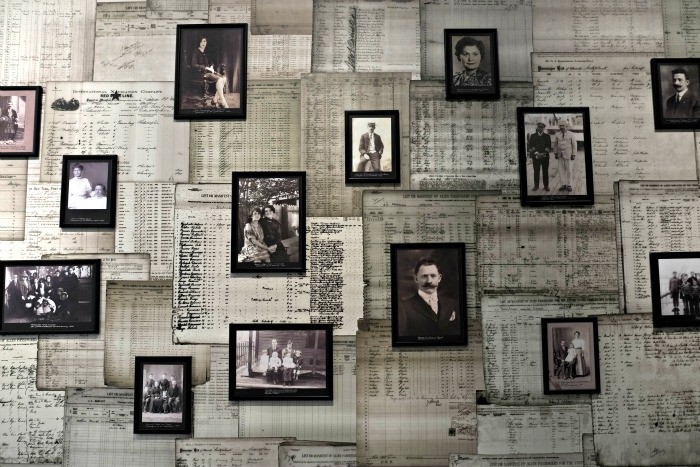
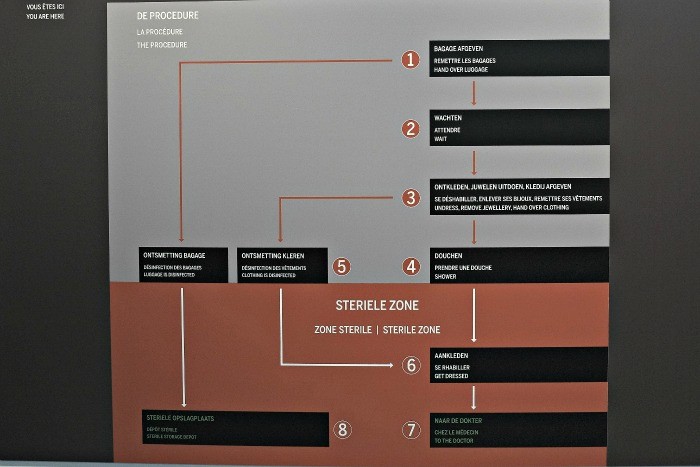
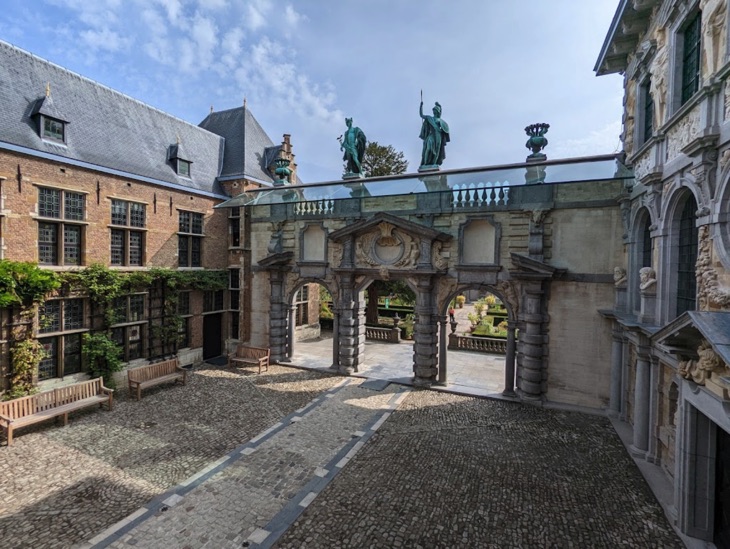
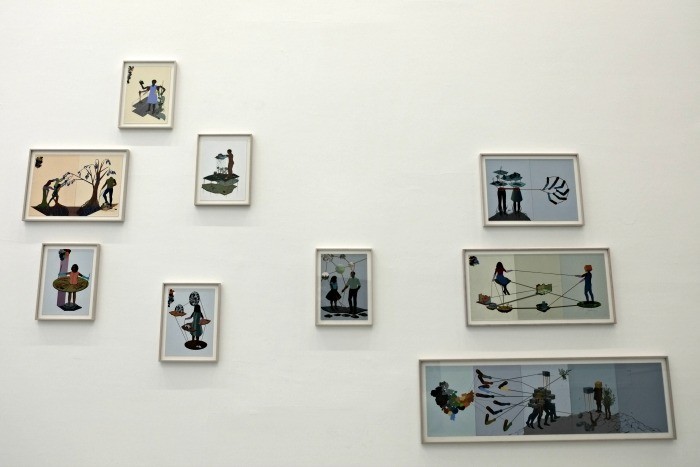
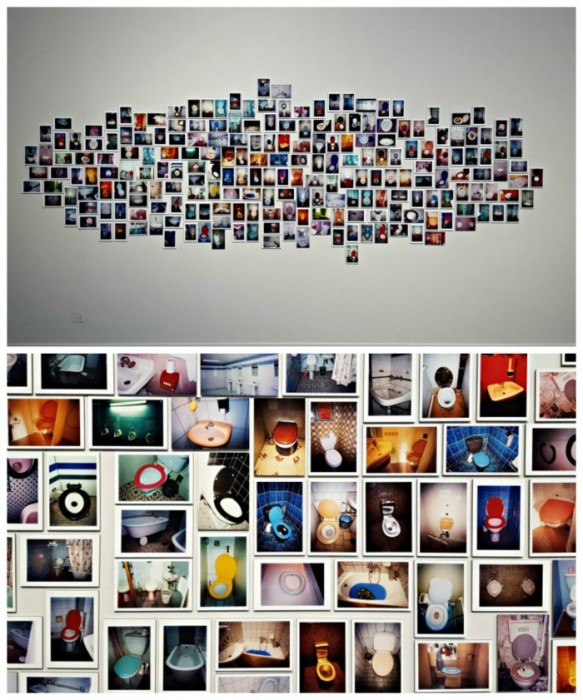
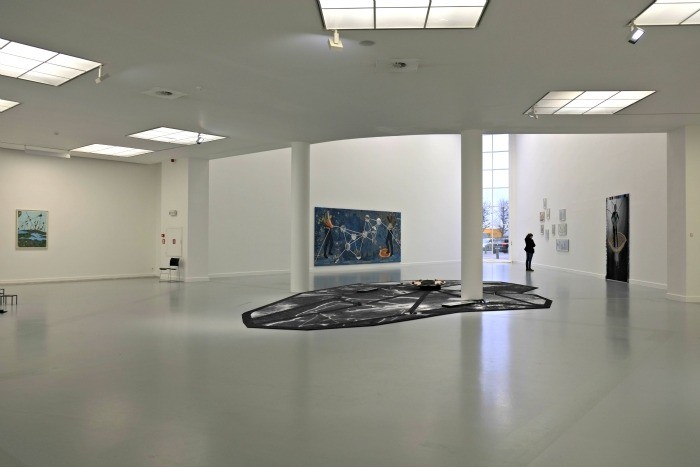
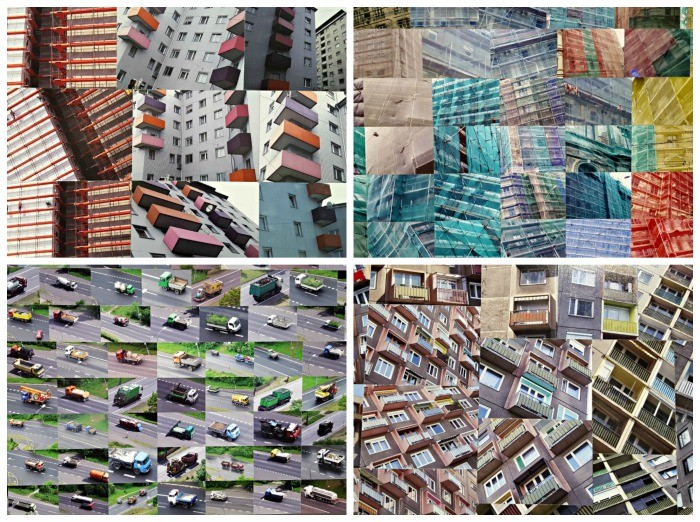
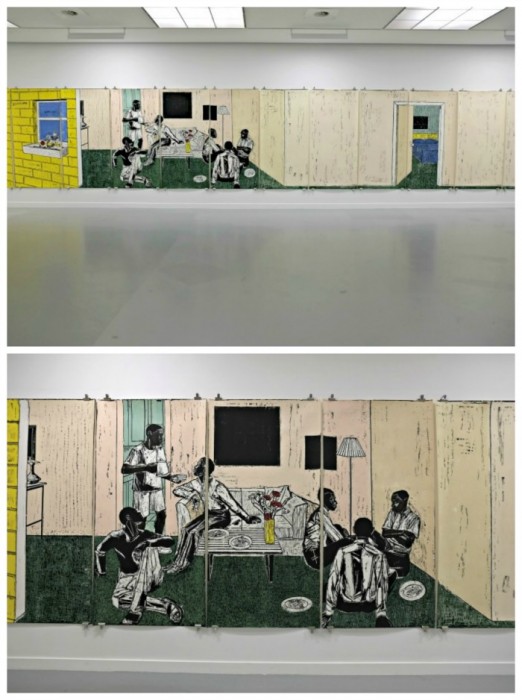
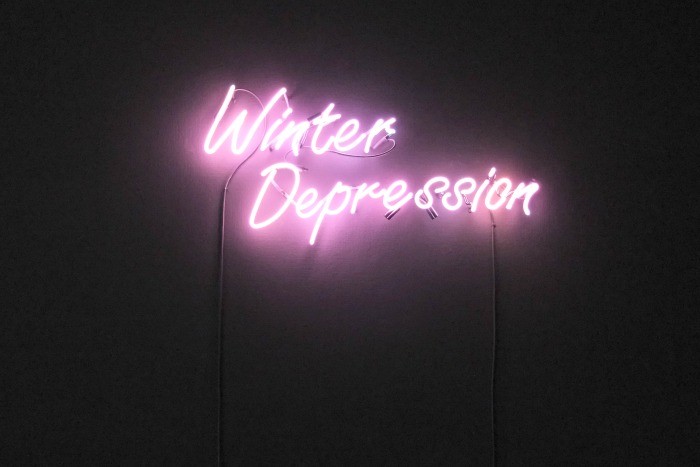
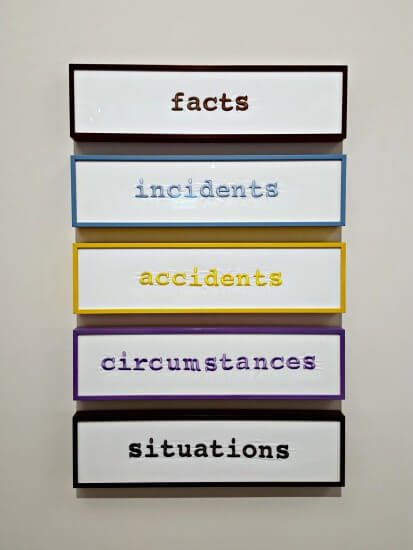
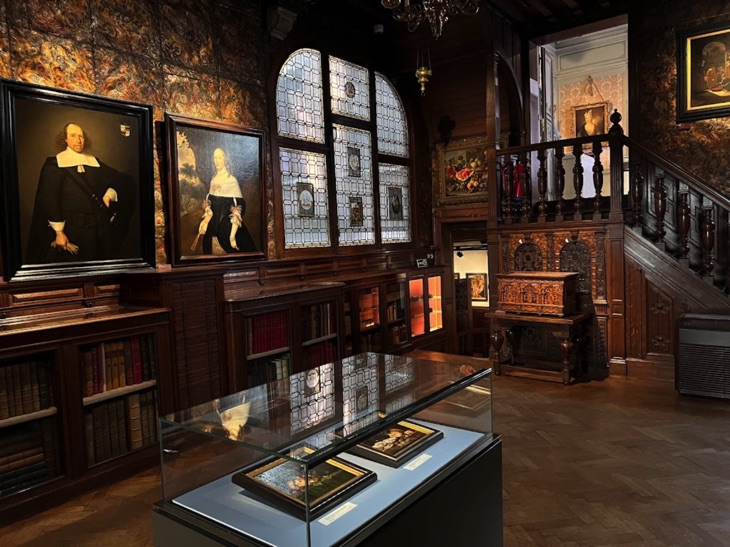
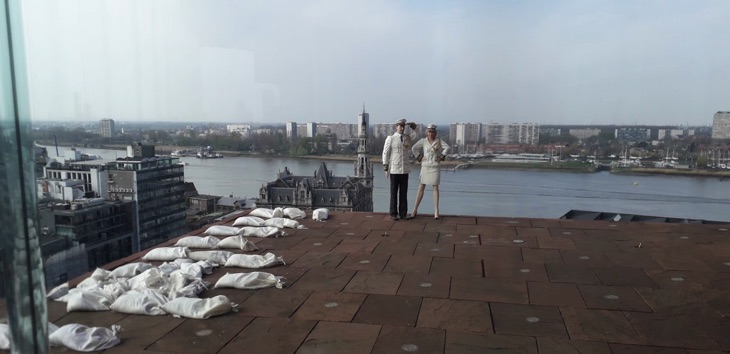
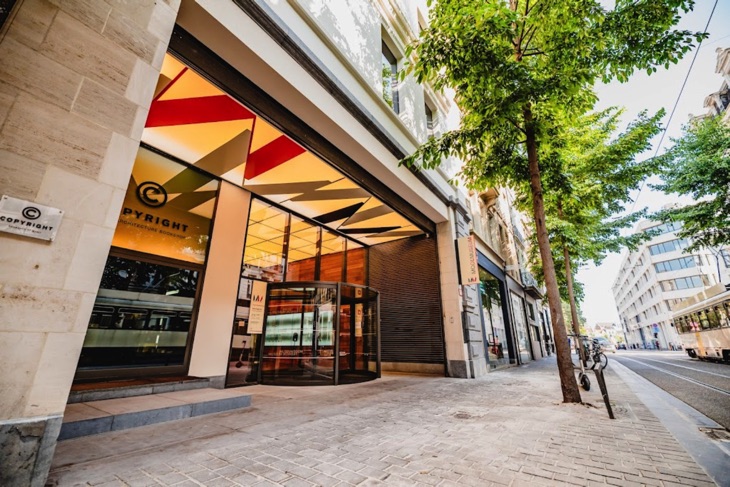
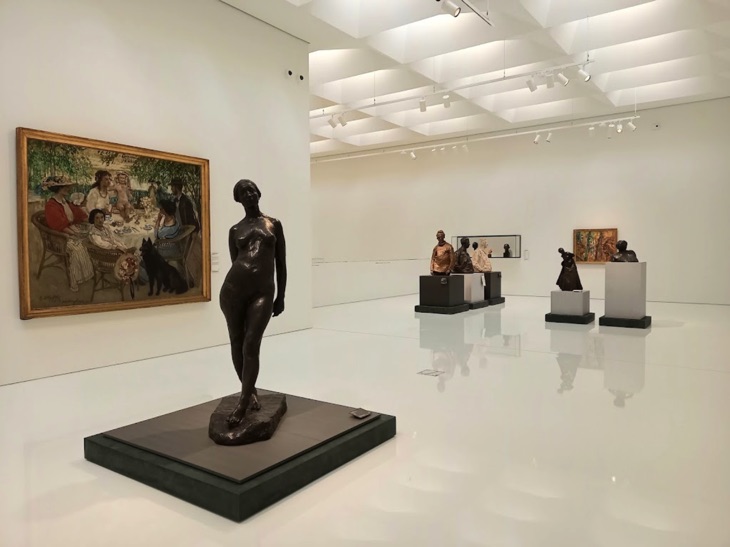
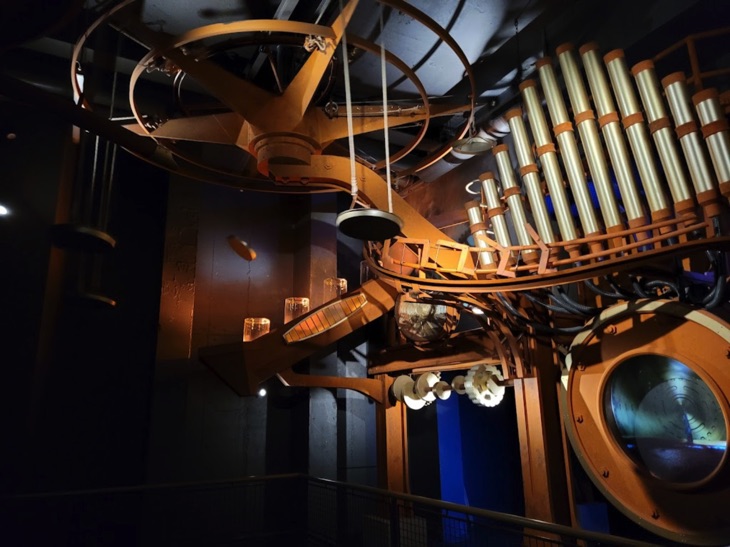
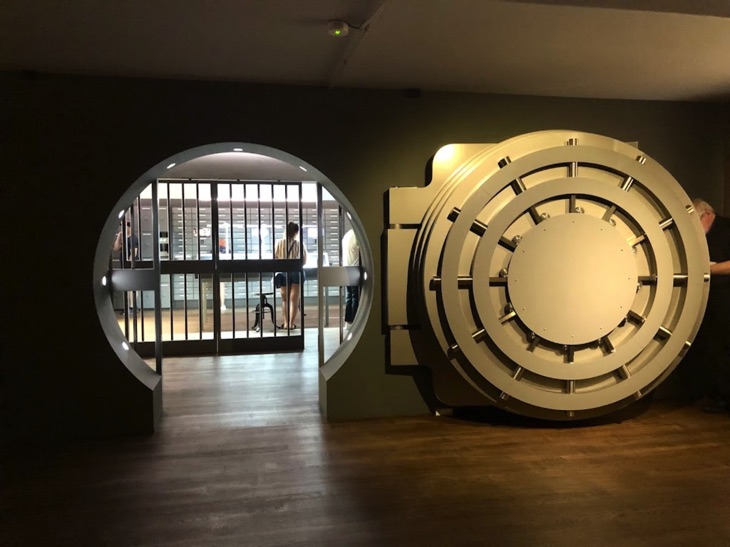
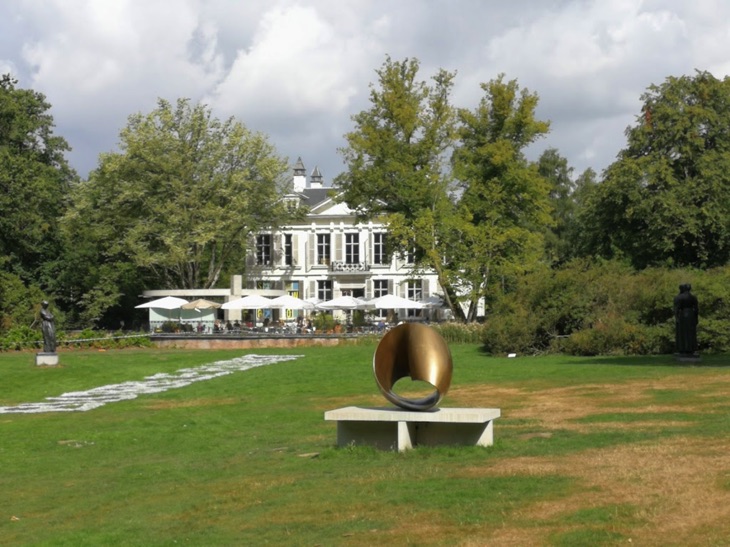
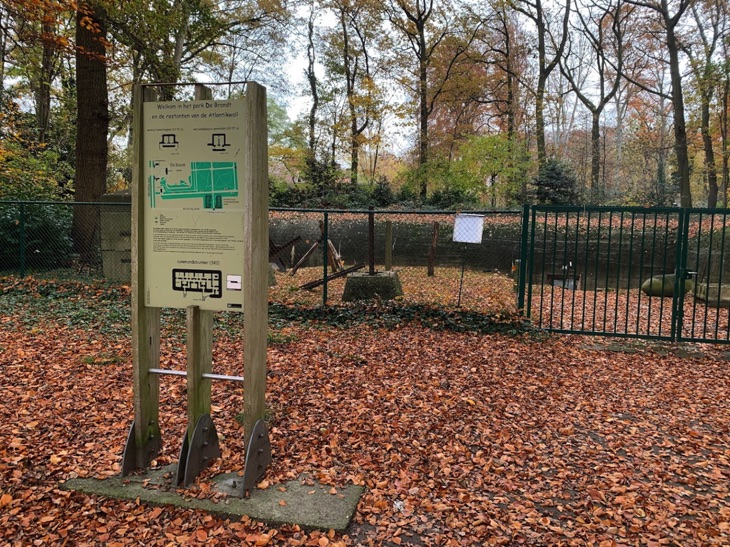
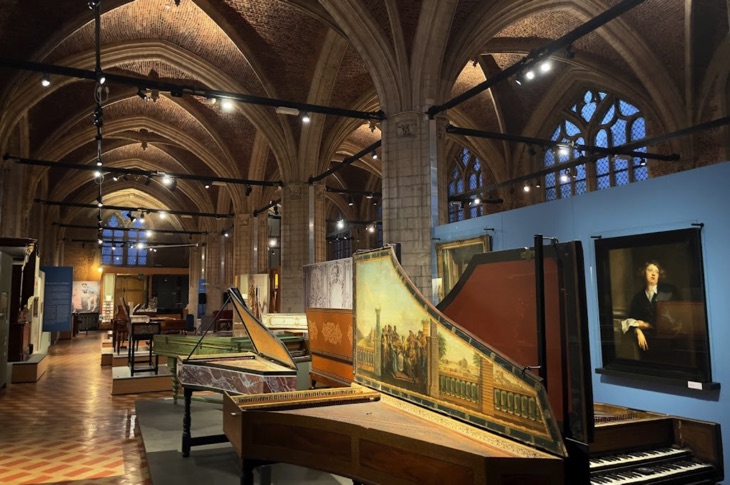
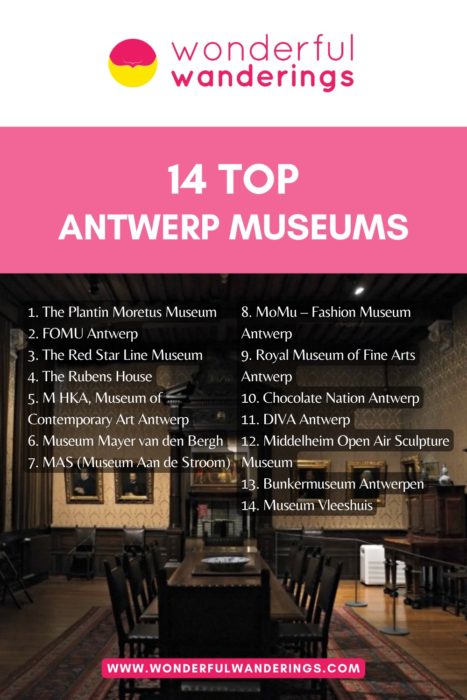
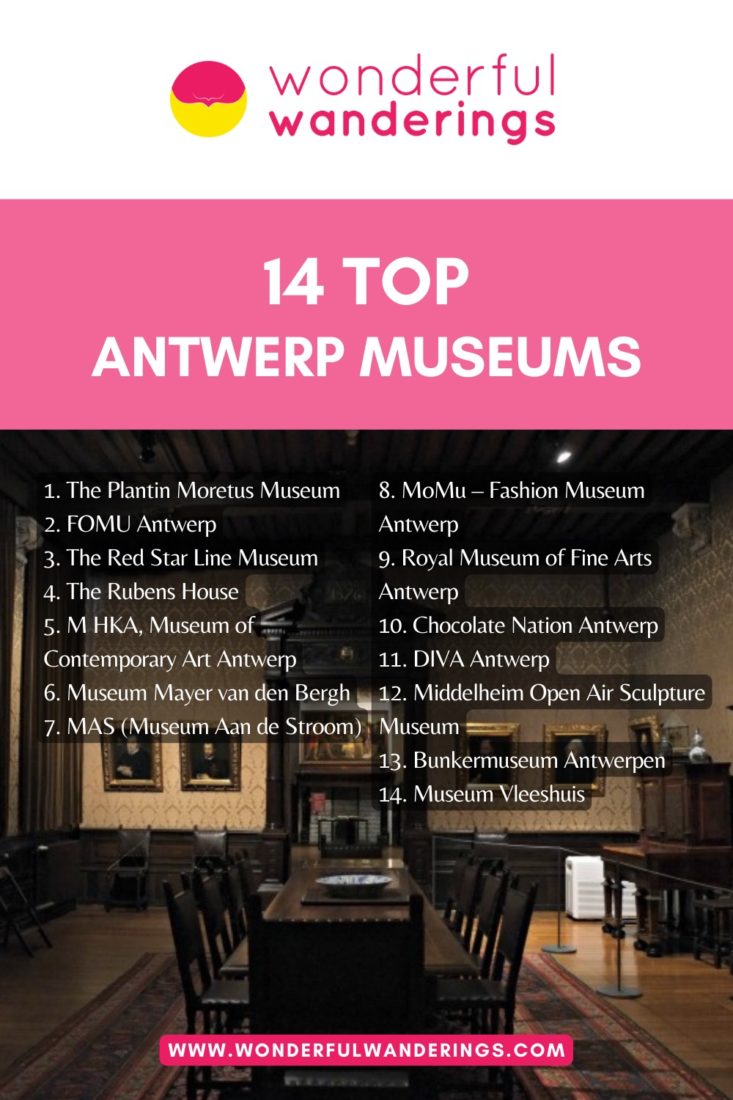
Chris (Amateur Traveler) says
Did you get to the Red Star Line museum there? One of my favorites.
Sofie says
This post only has museums that I’ve been to :-) I loved the Red Star Line Museum as well!
Chris (Amateur Traveler) says
OK, duh, I guess I thought I read the whole article before I commented. LOL. In my defense it was loading a bit slow this morning.
Sofie says
No worries :-)
Thanks for letting me know it was loading slowly. I’ll look into that.
What country were you reading from?
Sofie says
No worries :-)
Thanks for letting me know it was loading slowly. I’ll look into that.
What country were you reading from?
Chris (Amateur Traveler) says
from the US, California
Sofie says
Thanks!